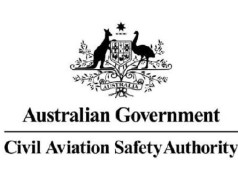Australia: Member of an emergency workers’ group in Austrailia, Steve McLinden is taking part in a trial these days to jump-start the use of unmanned aircraft by Europe’s emergency services. The goal is to use drones for tackling real-world emergencies, before any country.
The “drone school” builds on Europe’s worldwide lead in giving public groups and companies relatively free rein to experiment with unmanned aircraft. If everything goes as planned, the project’s backers hope government agencies in Europe and farther afield can piggyback on the experiences, helping to transform drones from recreational toys to lifesaving tools.
“For us, this technology is a game-changer,” said Mr. McLinden, who traveled to Copenhagen for a three-day training course with two colleagues from the Mid and West Wales Fire and Rescue Service. They will start offering 24/7 drone support — allowing colleagues, for example, to monitor accidents from 300 feet above — across central Wales later this month.
“Drones aren’t going to replace what we do,” Mr. McLinden added. “But anything that we can do to give our crews an advantage, that’s great.”
The three days of training in Copenhagen were the beginning of a six-month trial, the world’s largest and most widespread experiment with unmanned aircraft to potentially save lives. Four teams from Britain, Denmark, Iceland and Ireland are taking part in the program, organized by the European Emergency Number Association, a nonprofit trade body, and supported by DJI, the Chinese drone maker.
Each group will use two drones costing up to $5,000, some with thermal imaging cameras, and share their experiences as they use the machines when responding to emergency calls. In a somewhat stuffy classroom at a disused fire station in Copenhagen, Thomas Sylvest gave advice to Mr. McLinden and others from his two years of flying. As Denmark’s first, and so far only, emergency service drone pilot, Mr. Sylvest has responded to things as varied as missing person cases and fires, often receiving calls late at night.
Mr. Sylvest, a fast-talking 50-year-old, offered tips on how best to share videos streamed directly from drones to commanders on the ground. During a recent fire in downtown Copenhagen, Mr. Sylvest said, he was able to beam high-definition images from high above, allowing his bosses to judge if a building’s walls would collapse (they did not). And when the police called him out last year after a man was reported missing, he flew his drone along a stretch of train tracks to guide colleagues on where best to look. (The man was found.)
“We are just firefighters,” he said as he nursed a cup of coffee during the first day of training. “We have to be able to use drones in very simple ways.” The drone boot camp contrasts sharply with the experience of emergency workers in the United States, where it has been harder to use drones for such purposes.




